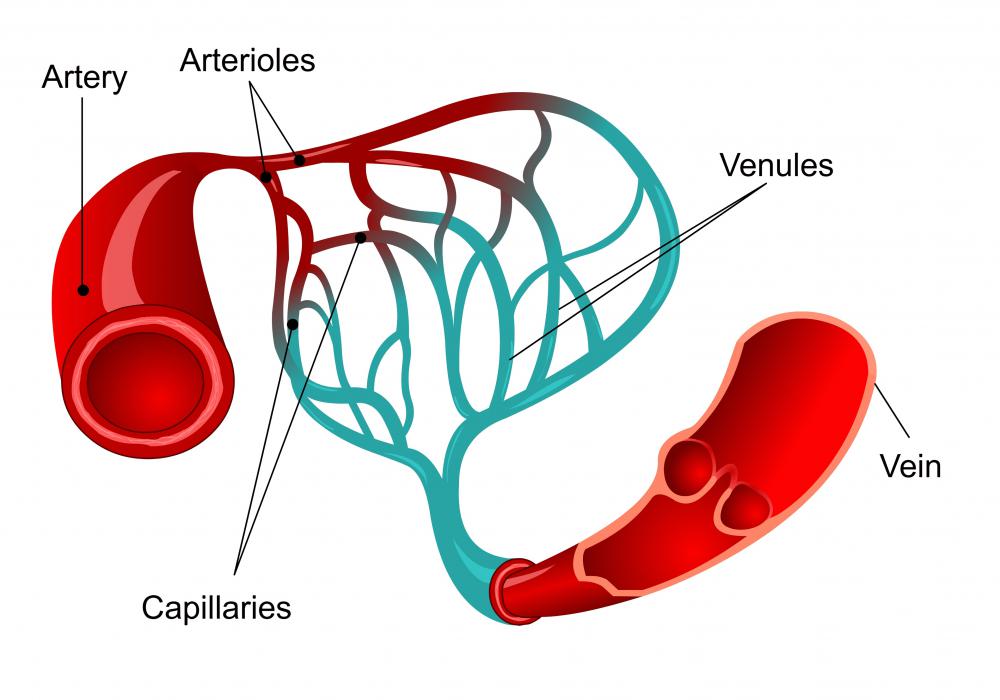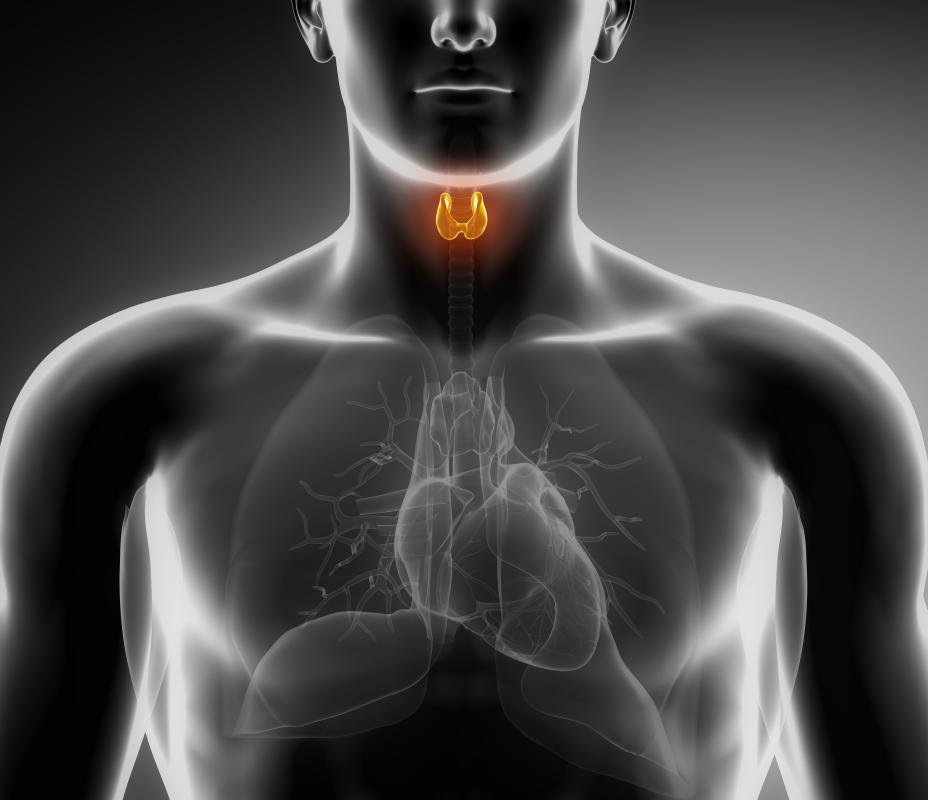At TheHealthBoard, we're committed to delivering accurate, trustworthy information. Our expert-authored content is rigorously fact-checked and sourced from credible authorities. Discover how we uphold the highest standards in providing you with reliable knowledge.
What are the Different Types of Capillaries?
Capillaries are the smallest and most fragile of the body's blood vessels. They are responsible for what is known as microcirculation, meaning that they create a circulatory network within the organs of the body. There are three different types found in the human body: continuous, fenestrated, and sinusoidal. The differences in the various types is due to their location in the body as well as their particular function.
The role of the capillary is to connect the arterioles and the venules. Arterioles are small blood vessels that branch out from arteries, while the venules branch out from veins. Arteries are the vessels that carry clean, nutrient- and oxygen-rich blood from the heart to the remainder of the body. Veins carry the blood back to the heart once the nutrients have been absorbed by the various cells and tissues of the body. Each individual capillary does not work alone, as these vessels form a network in order to carry out their role in the circulatory system.

Continuous capillaries get their name from the fact that the cells forming them provide a continuous lining with no interruptions. There are very tight junctions inside of these small blood vessels, which only allows the smallest of molecules, such as water molecules, to penetrate through the lining. This type is found in areas of the body such as the central nervous system, skeletal muscles, and skin.

Fenestrated capillaries contain very small pores or openings called fenestra. These vessels allow small molecules as well, as limited amounts of nutrients, to pass through their walls. They are most commonly found in the endocrine system of the body, which helps to regulate growth and reproduction and includes such glands as the pituitary and thyroid. This type of blood vessel is also found in lesser degrees in other organs, including the kidneys, pancreas, and the intestines.

The other type is known as the sinusoidal capillary. The shape of these vessels is a bit irregular, not having the typical cylindrical shape of the other types. These vessels can also be fenestrated, although due to their irregular shape, they are categorized separately. They are found in organs such as the liver and spleen, as well as in the bone marrow and portions of the endocrine system.
AS FEATURED ON:
AS FEATURED ON:















Discussion Comments
@turkay1-- Yes we do! They are not normally visible though, unless they are broken, in which case they take on a red appearance much like spider veins. But the capillaries on the face are even smaller and even when they are broken, you will have to look very closely to see them.
Broken capillaries on the face is actually one of the reasons why some beauty experts oppose the new face exfoliating gadgets that are becoming popular. They say that these brushes are too hard on the skin and cause the capillaries to break, so they don't recommend them. I have some broken capillaries too, from exfoliating too hard and also because I use my fingers to clean blackheads sometimes. Bad idea!
Do we have capillaries in our face? Are they normally visible?
@Iluviaporos - It might also be dangerous to treat spider veins. Usually they use sclerotherapy, which is when they inject something into the visible facial capillaries to break them up.
My mother had this treatment and it worked well. After a while, her veins were much less noticeable and she was quite happy with it.
But, then we found out that they recently discovered the chemical used in sclerotherapy can travel to the heart and lungs and even the brain.
It's a bit of a worry. My mother was told beforehand that there were risks of course, but I don't think it was spelled out that the risk was so blatant.
It's often broken capillaries that are responsible for spider veins. These are the little red veins that start appearing on your face and legs as you get older.
I had a friend who had a lot of these on her legs and she absolutely hated them. She refused to go swimming or wear shorts because she was sure everyone would notice and think that she was a freak. To be honest, I didn't even think they were that bad, but she went to all sorts of lengths trying to get rid of them.
It never worked, and eventually she just accepted them. But, I wish she hadn't wasted all that money!
Post your comments